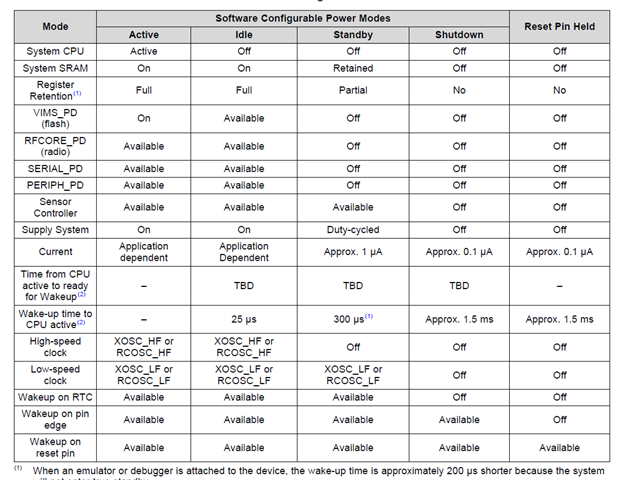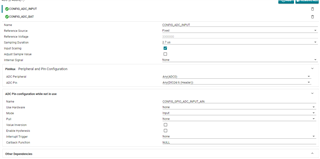Other Parts Discussed in Thread: SYSCONFIG,
Hi,
My module has temperature sensor.
I read temperature data every 5 second and send.
And I use Listen before talk mechanism.
I separate the RF TX function thread and reading temperature thread now. It works well.
My question is what is best solution between single thread or double thread for power consumption?
I cannot measure real power consumption right now for some reason.
If I have to use single thread, I will put reading temp function in mainthread while loop.
-----
When I call sleep function, system will go to power save mode during sleep time?
I read some document, TI driver will manage the power consumption inside the library.
I use TI-RTOS.
When I use multi thread, sleep function will call at all thread.
Please explain the best configuration which is focused on power consumption.
How about initialization for unused driver for example UART, I2C, ....
I want to go deep sleep, wake-up, measure temperature and send data, and go to sleep.
Do I need extra H/W component to wakeup CC1312?
Let me know power mode set example for TI-RTOS.
BR
Paul





